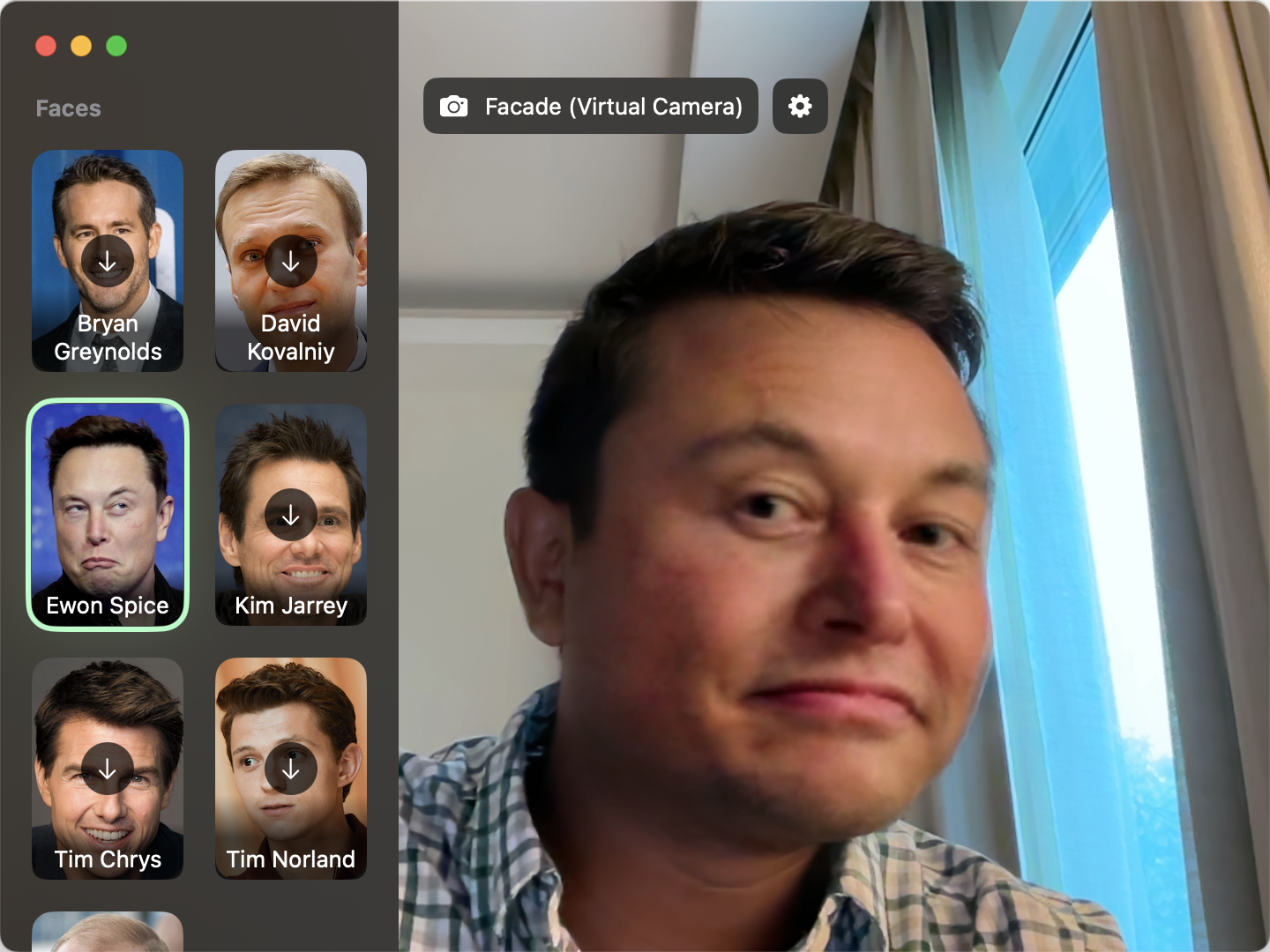A system extension for creating loopback virtual cameras
Coupled with C and Python libraries to interface with it, Facade abstracts away the low-level details of device virtualization. You get simple APIs to create and stream video into cameras.
Simple APIs to create and stream content into virtual cameras. Reimagine how you present yourself online.
import time
import typing
from pyfacade import *
facade_init()
device = FacadeDevice.list()[0]
camera = typing.cast(VideoFacadeDevice, device)
camera.open(mode='w')
pixel_buffer = bytearray(camera.width * camera.height * 4)
clear_line = [0 for i in range(0, camera.width * 4)]
white_line = [255 for i in range(0, camera.width * 4)]
line_idx = 0
def render():
global line_idx, pixel_buffer, camera
pixel_buffer[line_idx:line_idx + camera.width * 4]
= clear_line
line_idx = (line_idx + camera.width * 4) % len(pixel_buffer)
pixel_buffer[line_idx:line_idx + camera.width * 4]
= white_line
camera.write_frame(pixel_buffer)
if __name__ == "__main__":
camera.write_callback(render)
render()
try:
while True:
time.sleep(1)
except KeyboardInterrupt:
camera.close()Coupled with C and Python libraries to interface with it, Facade abstracts away the low-level details of device virtualization. You get simple APIs to create and stream video into cameras.
Try Facade virtual cameras before writing a line of code. The Facade app comes with a preset of face swap cams you can try.

To get started, install the Facade app and try running one of our sample camera programs.
Get Started